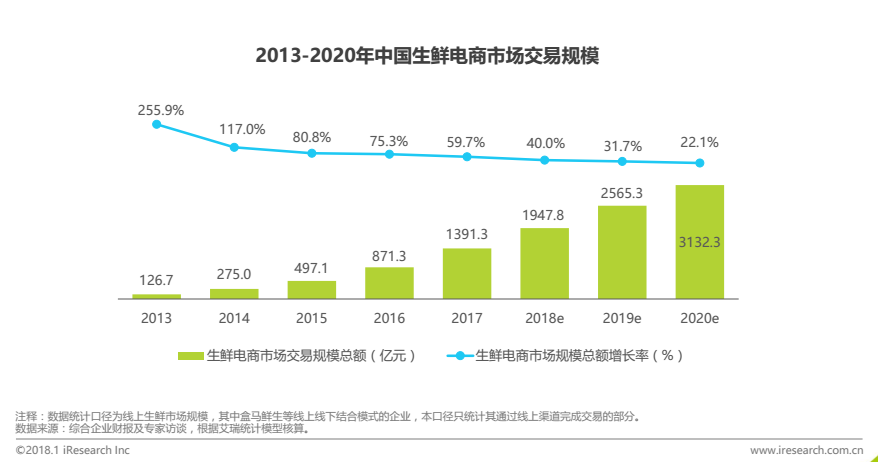
source:iresearch.com.cn
With the rapid development of China’s fresh food e-commerce industry, consumers in China are enjoying a more diversified diet with food from around the globe. The industry itself has seen an average annual growth rate of more than 50 percent.
Due to the gap in user experience, the China’s fresh food e-commerce industry faced some challenges in 2016. On one hand, some fresh food e-commerce players went bankrupt or merged, on the other hand, new entrants invested in logistics and supply, and innovated new business models, combining dining with grocery shopping, according to a 2018 report on China’s fresh food e-commerce industry published on January 5 by consulting firm iResearch.
The fresh food industry has evolved into an online-to-offline (O2O) business model with an upgraded supply chain, the report said.
In 2017, China's fresh food e-commerce industry grew to 139.1 billion yuan ($22.1 billion), up 59.7 percent year-on-year, data in the report shows.
Consumers now have more options for fresh food from all over the world, and they can choose to either shop in a brick-and-mortar store such as Alibaba’s Hema Fresh, or place orders from such stores in apps on a mobile phone for delivery.
In 2016, new entrants such as Alibaba and JD.com have introduced such innovative business models and added new impetus to the fresh food market.
Pioneer fresh food market players have been focusing on vertical platforms. With e-commerce giants being the new entrants, the market landscape has been transformed, O2O linkage has been improved and the innovative model of dining in supermarkets or having fresh meals prepared by supermarkets and delivered is being embraced.
Consumers appear to be satisfied with innovative platforms that combines dining and grocery shopping as well as the overall fresh food e-commerce experience.
Fruit turned out to be most popular category among fresh food online consumers. 32 percent of users purchased fruit online. Following fruits, milk and vegetables were the most popular purchases.
Additionally, seafood and frozen fast food was also popular, the report said.
For an average order, 39.5 percent of consumers spent between 101 and 200 yuan, and 30 percent spent between 51 and 100 yuan.
45.5 percent of surveyed consumers expected their order to be delivered within one hour.
In the innovative model combining dining with grocery shopping, a wide range of products and user experience in the brick-and-mortar store are important factors for retaining users. More than 90 percent of surveyed users stated they would continue to purchase fresh food from such platforms.
Unsatisfied users complained about a limited choice of goods and long queues in the brick-and-mortar stores.


